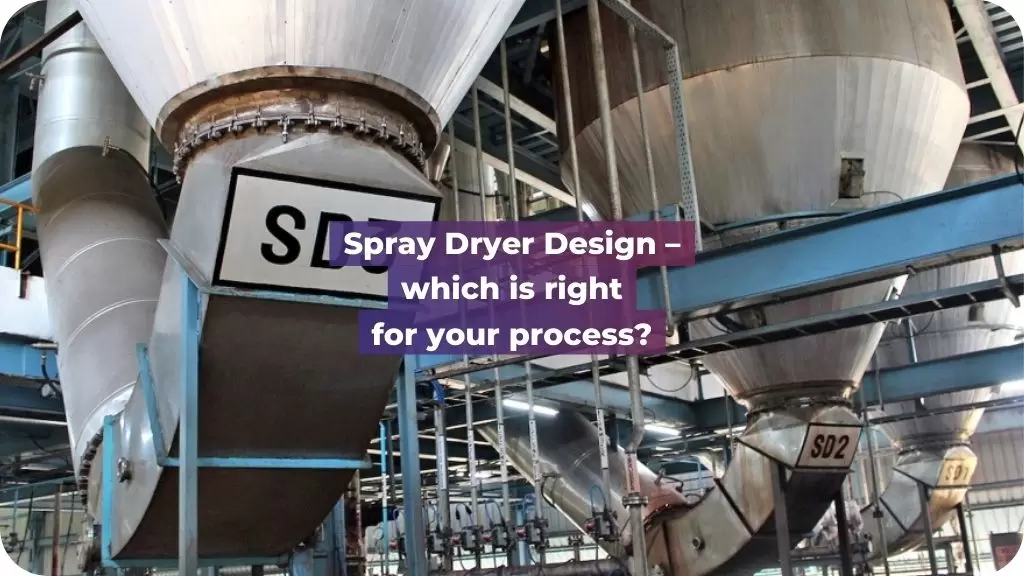What is the quickest and most efficient way of getting vast amounts of fluids to dry?
That’s the central question dryer manufacturers battle with all the time. Thus, the best way to judge various types of dryers is by their qualitative and economical performance. Spray dryers are generally classified based on two criteria: The flow direction of hot air and feed, and flow loop of the system. Spray driers classified on basis of air and feed flow are designed to enhance thermal efficiency of the system. Which air flow is best suited for which process is determined by the properties of the material involved. There are three types of spray dryers based on air and feed flow direction.
Co-current Flow
In co-current spray dryer both feed spray and hot air flows in the same direction. This is one the most preferred designs, among all other flow designs in the spray dryer. Advantages of co-current flow include immediate expose of wetted droplet to the hottest gas available which results in quick initial drying and simultaneously rapid cooling of the drying air while minimising the probability of overheating. This arrangement is preferred even for the heat sensitive products.
Counter Current Flow
In Counter current spray dryers, the feed and hot air are sprayed in opposite direction and dried particle comes in a contact with hottest air. Counter current flow system is more energy efficient as compared to the co-current system. Typically, minerals, soap, detergent etc. are produced with the counter current spray drying system.
Mixed Flow
The mixed flow is a combined type of Spray Dryer with both co-current flow and counter current flow system. In this type, hot air is drawn from top of the drying chamber and feed spray is located at the center of the chamber. The mixed flow type of systems are typically used for products which require relatively higher residence time in the system.
Experts advise running on-site tests on material to determine which system would be best suited for drying. Shachi engineering has the expertise to help you choose the right kind of system that allows you to arrive at the desired solution and performance quickly. CFD calculations are used to determine the most optimal flow and narrow down on the right model of spray dryer.

